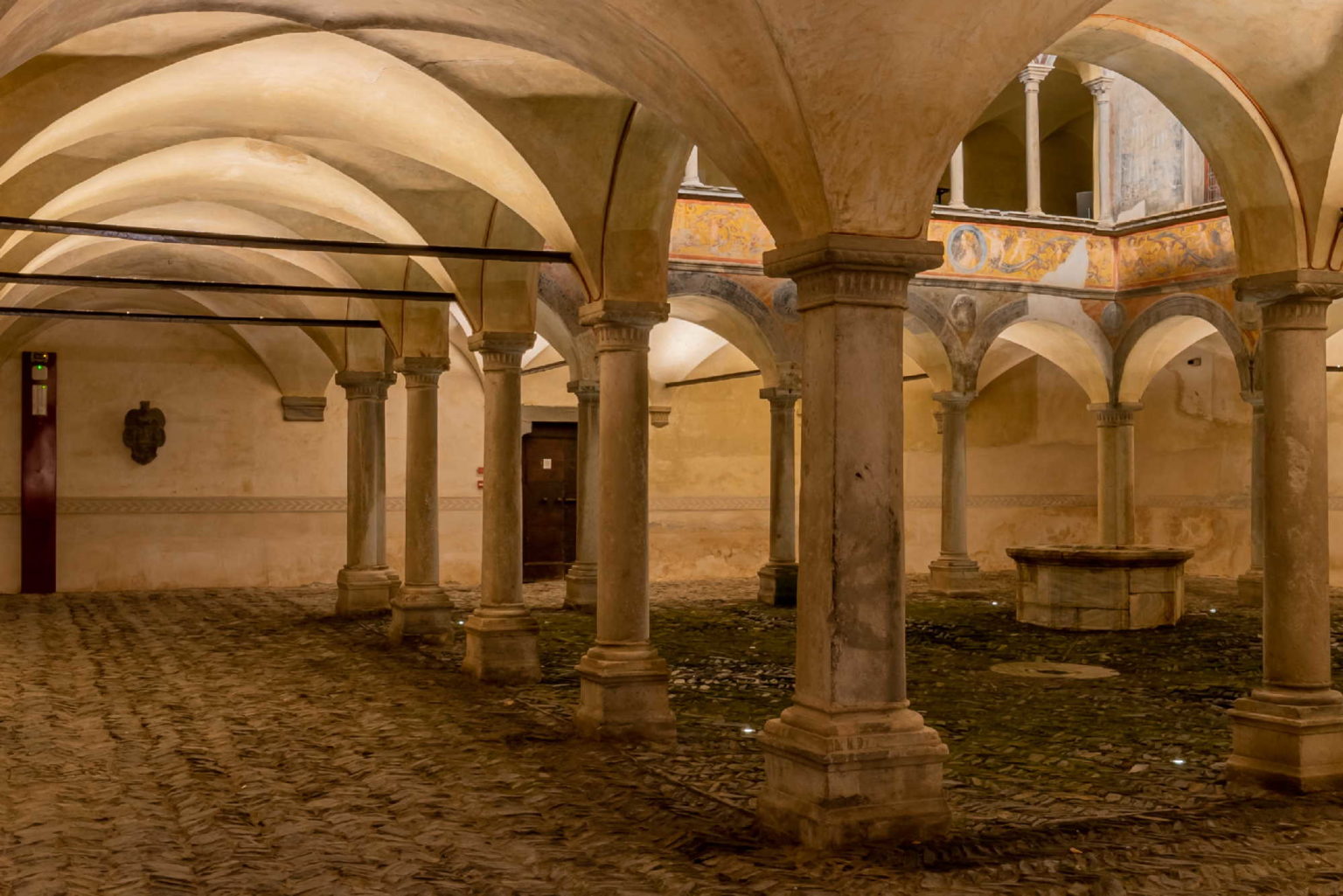
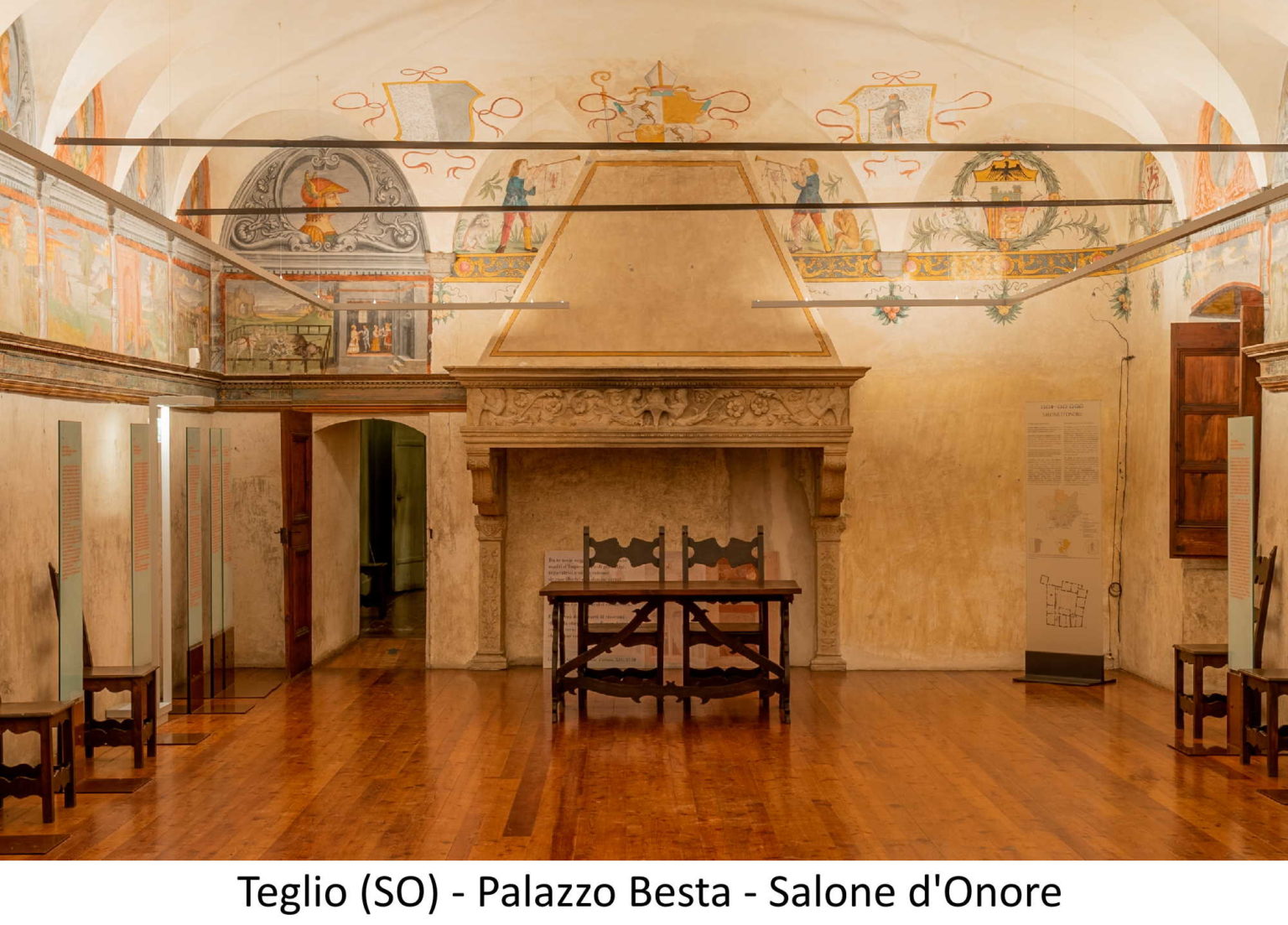
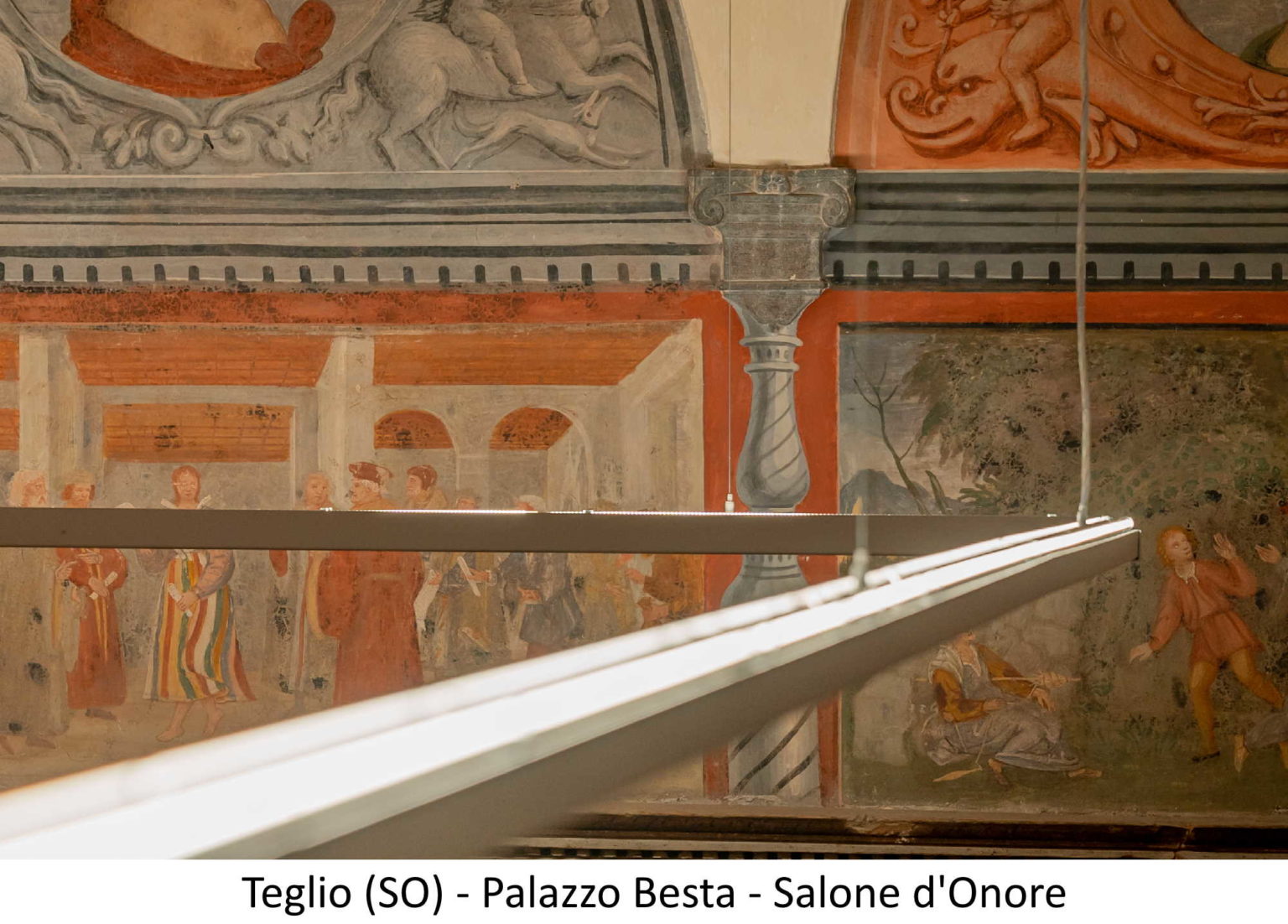
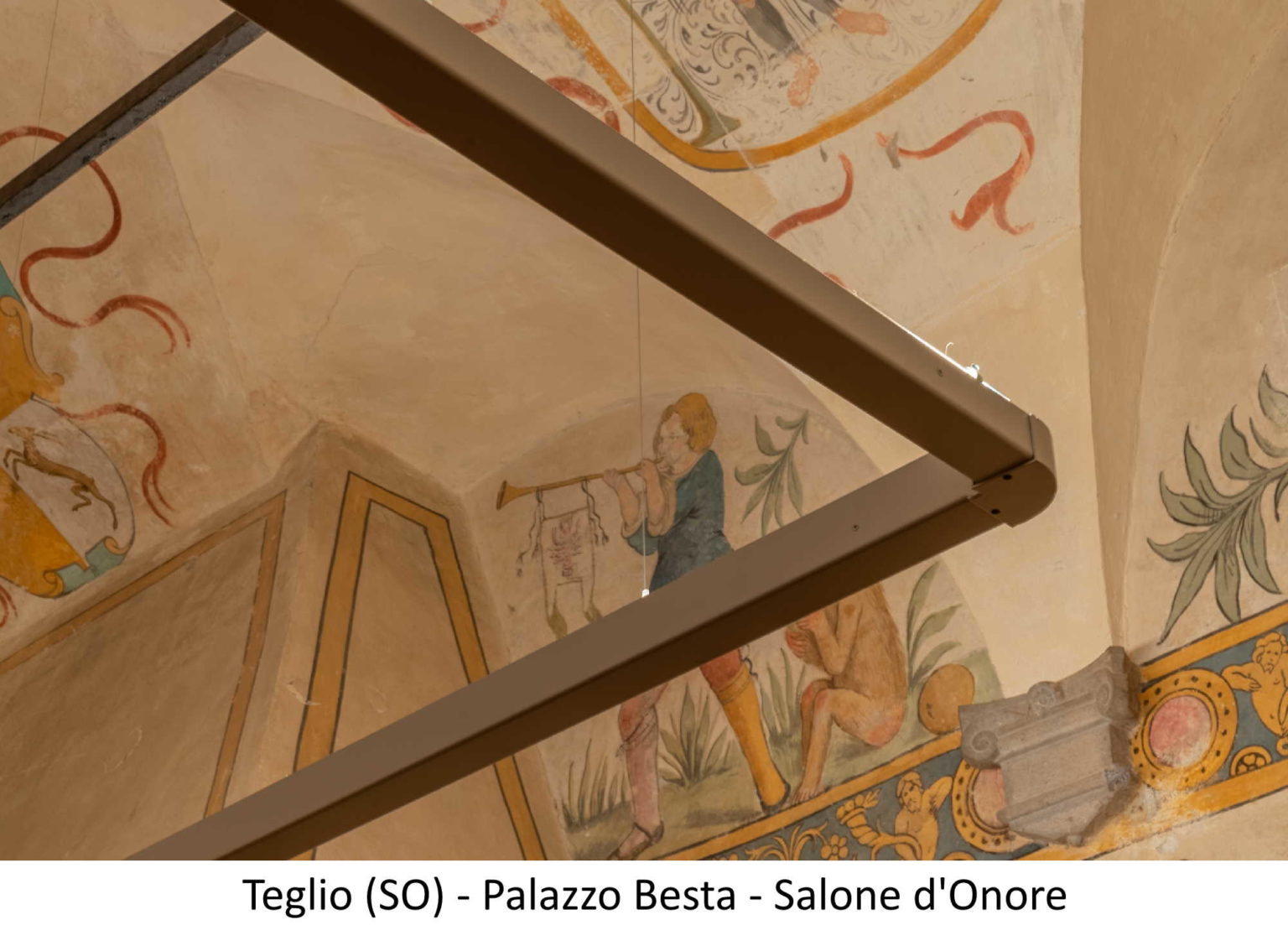
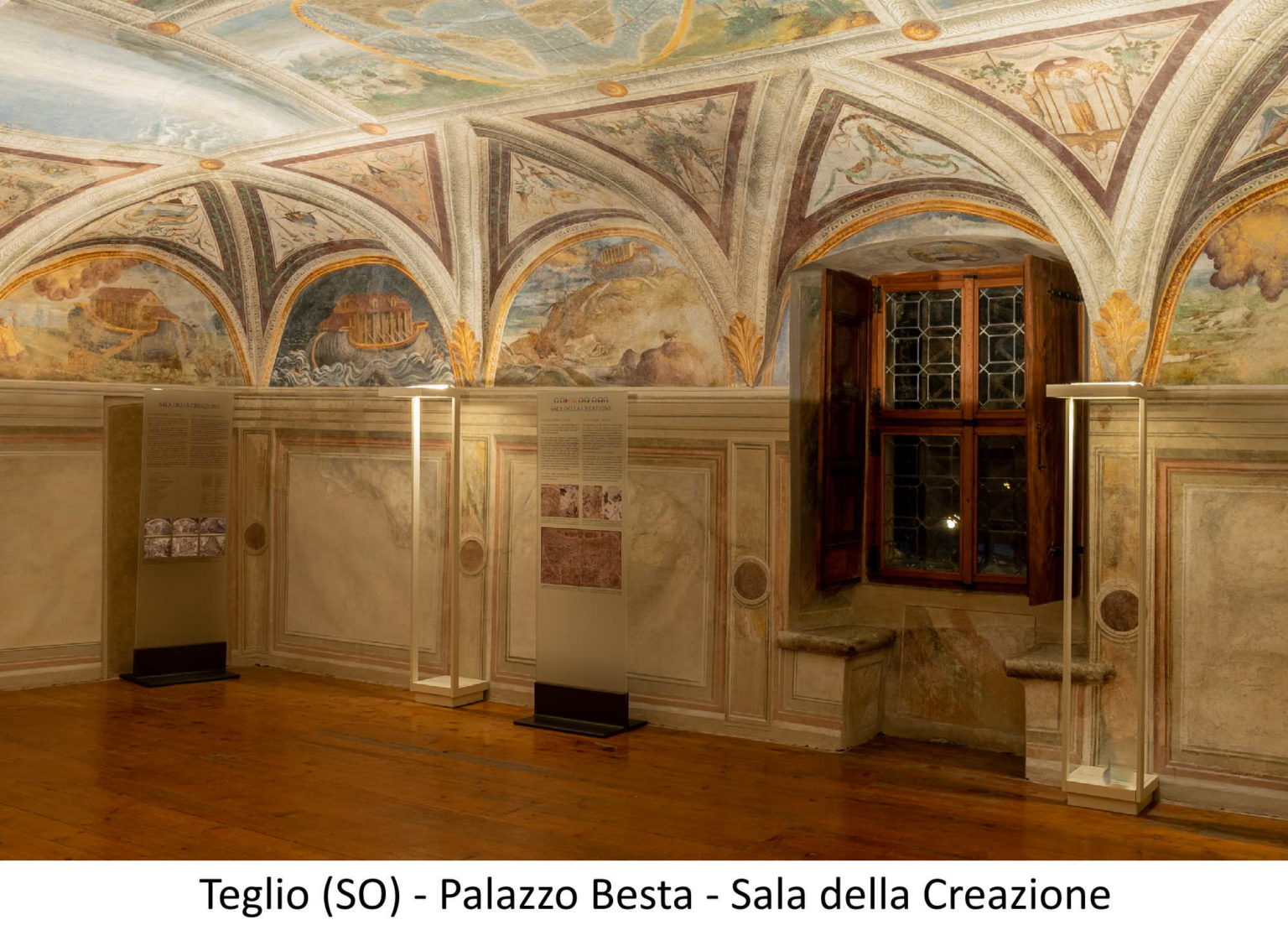
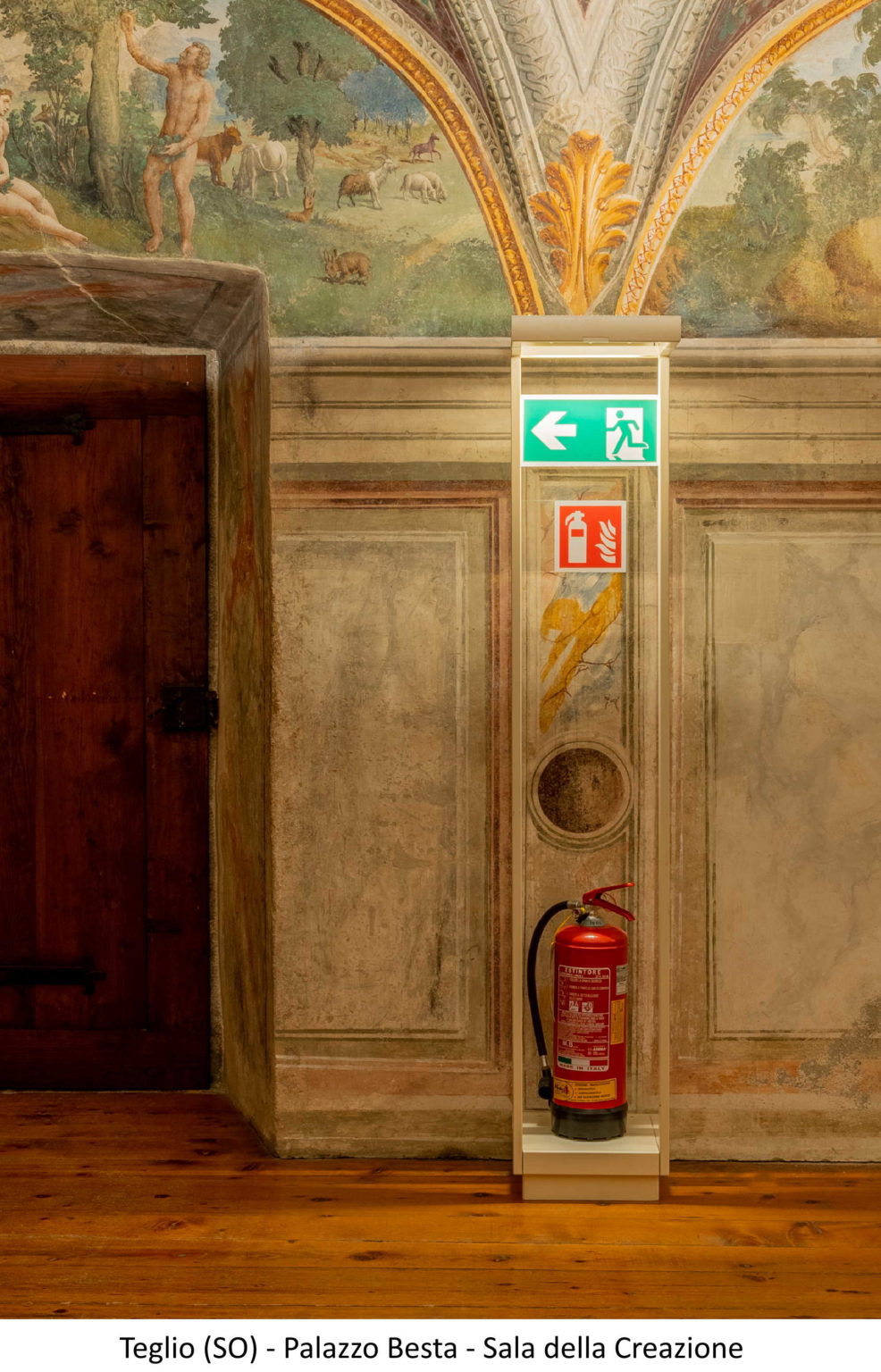
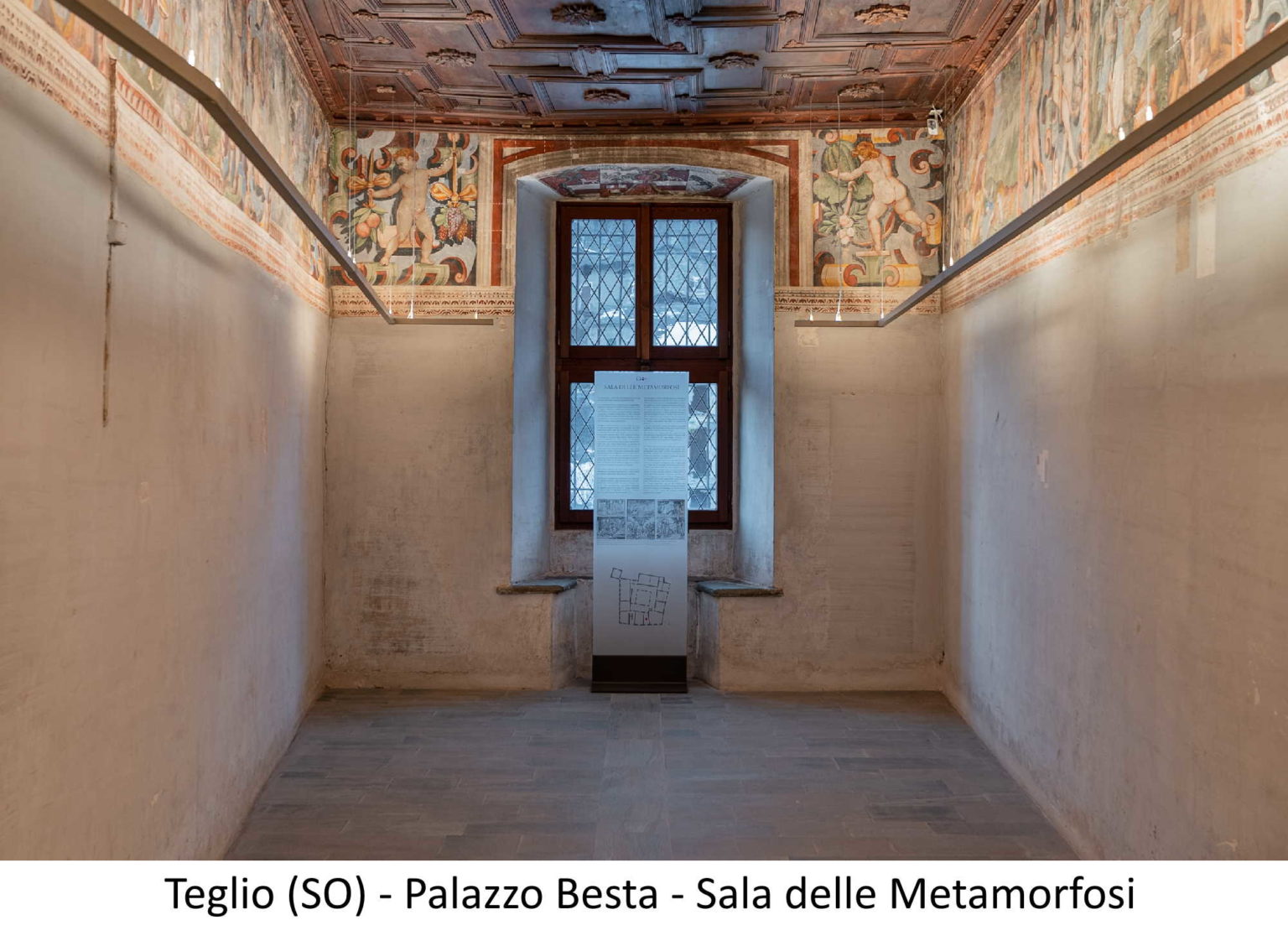
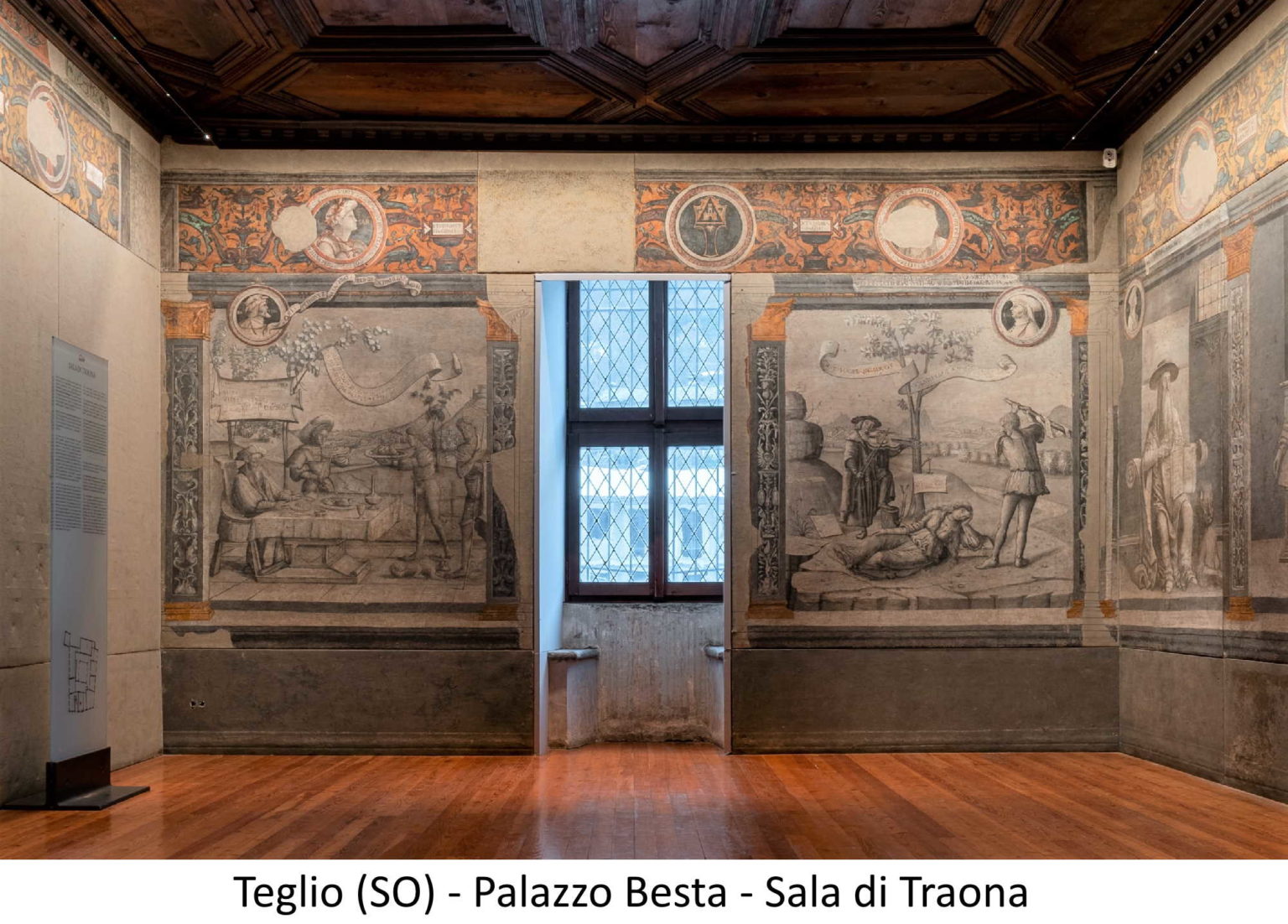
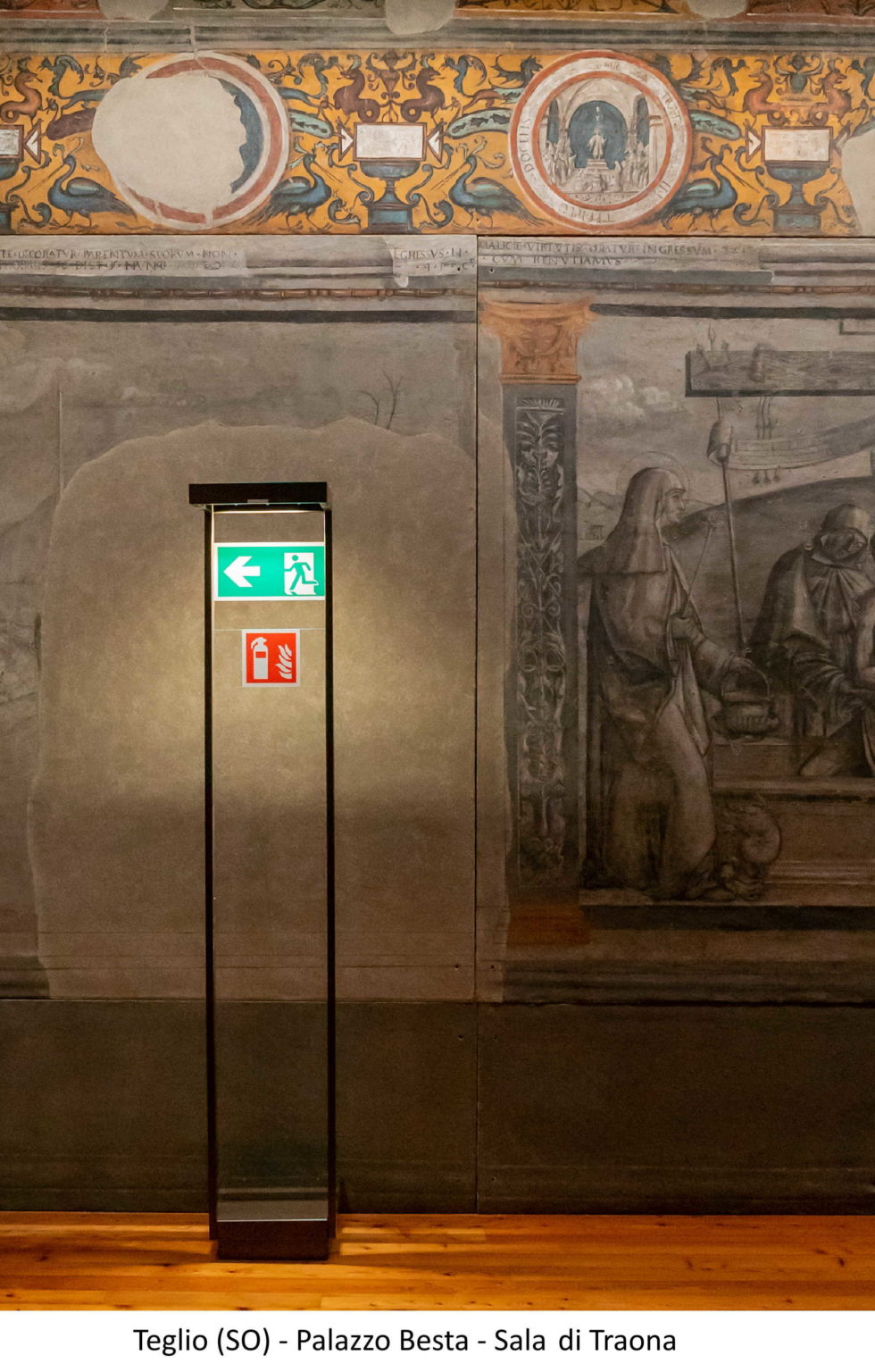
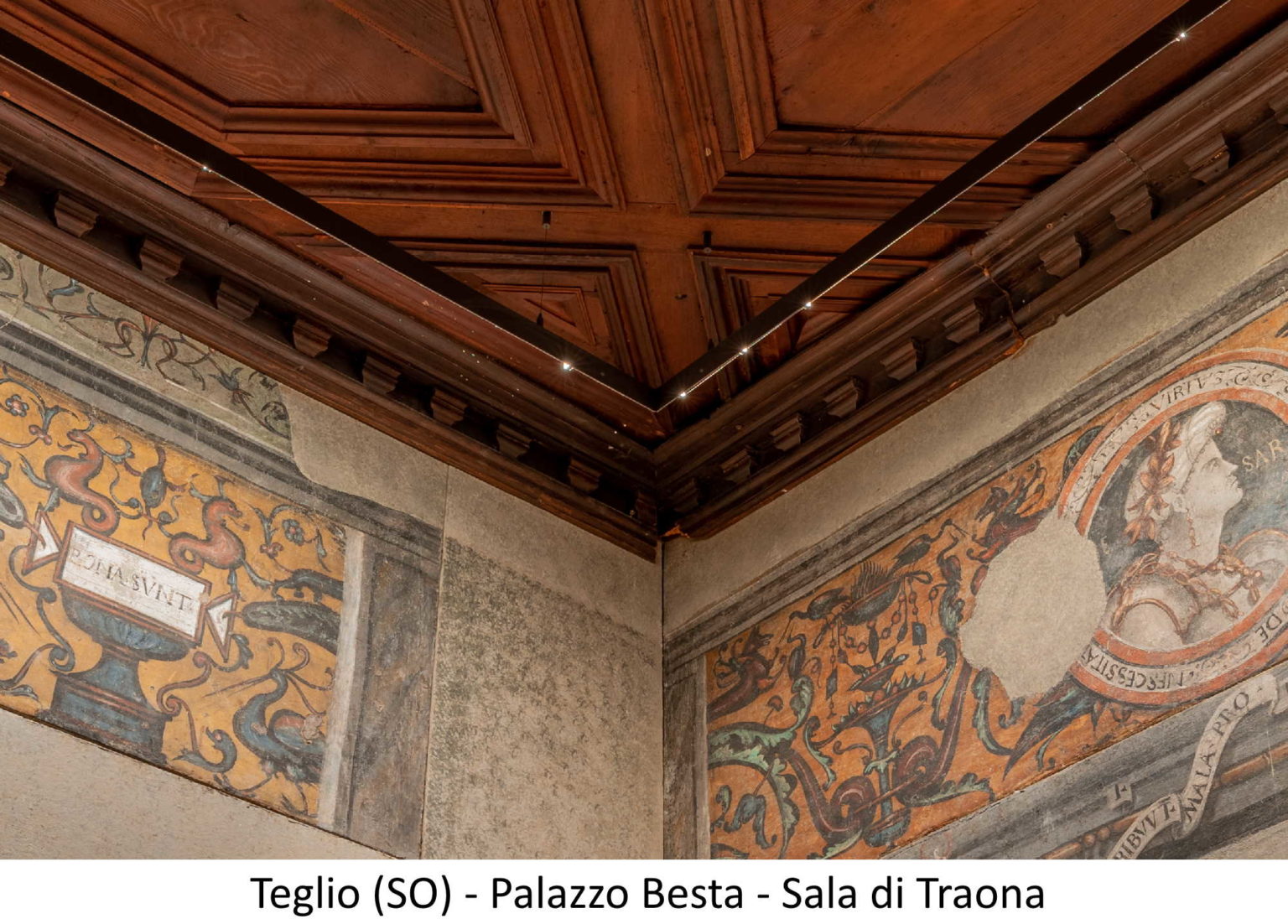
TEGLIO (SO) – PALAZZO BESTA
INTERVENTI > Artistic lighting and home automation > TEGLIO (SO) – PALAZZO BESTA
Palazzo Besta is one of the most significant Lombard Renaissance residences, it was built at the end of the fifteenth century and subsequently decorated with splendid pictorial cycles with a mythological, biblical and historical theme, also known as the “small palace in the Alps”, it was built by the noble Besta family by incorporating pre-existing buildings, starting from the second half of the fifteenth century at the behest of Azzo I, giving impetus to the pictorial decoration and transforming the Palace into a Renaissance court that hosted artists, writers and philosophers.
The palace is characterized by an elegant loggia and an octagonal marble well. The building has three floors above ground which are organized around a square courtyard with two orders of loggias. The walls of the inner courtyard are frescoed with episodes from the Aeneid (1540-1630), while on the first floor it is possible to admire the Hall of Honor, decorated with stories from Orlando Furioso, and the paintings of the Room of Creation.
Artistic lighting intervention
The intervention was carried out on commission of the Lombardy Regional Museum Directorate following a new restoration project, the lighting project signed by the architect Alberto Pasetti has the main objective of improving the fruition and enjoyment of the architectural environments and decorative cycles, as well as optimizing energy consumption by reducing light pollution.
Melloncelli collaborated with the architect Pasetti providing advice in identifying the optimal solutions best suited to the intervention, engineering special versions of the products.
A series of in situ tests made it possible to experiment with new types of lighting bodies. These tests were carried out with the conservation of the works and their presentation to the public as the main objective. The solution adopted for the rooms with the pictorial works has considerably improved the quality of the perception of the works themselves, while reducing the number of projectors and allowing a considerable saving of electricity.
The lighting concept is based on miniaturized customized lighting fixtures created specifically to make the installation non-invasive and create a unique place between visitors and the works on display. The lighting is both general and specific for the works on display. In response to the visual rhythm of the exhibition spaces, the light establishes a special connection between visitors and the works of art illuminated with a track system installed in the rooms.
Hall of honor – customized lighting
In the Hall of Honor of the Palace runs along the lower edge a decoration with episodes taken from the Orlando Furioso by Ludovico Ariosto, with golden letters, some Latin mottos taken from Erasmus of Rotterdam’s Adagia, commenting on the scenes. In correspondence with the lunettes that mark the vault there are portraits of illustrious men and women. The episodes, presented in an order that does not always respect the plot, and the associated Latin mottos mean that the cycle is not just a mere narrative. Additional meanings are implied such as the exhortation to virtue, the condemnation of vice, spiritual elevation and the relationship between heaven and earth.
In this hall we have created a miniaturized track system in order to improve the usability and visibility of the decorations and architectural aspects.
Hall of Creation – lighting with customized floor lamps
The room takes its name from the frescoes with Stories from Genesis, in seven panels on the ceiling. The twelve lunettes depict the Stories of the progenitors and the Stories of Noah, in all likelihood the fresco cycle was made following the marriage (1576) of Charles I Besta with Anna Travers, of reformed religion. As evidence of the Besta family’s interest in geographical covers and cartography, on the vault of the Hall, next to the scenes of Creation, a frescoed “pallioforme” planisphere describing the world known in the mid-sixteenth century, this is based on Weltkarte, print first published in 1558 by the Rhenish cartographer and mathematician, Caspar Vopell.
In this room we have created a floor lamp designed by the Pasetti studio that enhances the chromatic characteristics of the frescoes, the high color rendering index, immediately guarantees a better chromatic perception of the decorative cycle, in particular for the reading of warm shades (yellow-orange- Red).
By permission of the Ministry of Culture – Lombardy Regional Museums Directorate https://museilombardia.cultura.gov.it/musei/palazzo-besta/
Lighting design: Studio Pasetti Lighting